Credits
Feature by: Cullen Gallagher, Beth Gilligan, Leo Goldsmith, Jenny Jediny, Ian Johnston, Evan Kindley, Thomas Scalzo, and Andrew Schenker
Posted on: 14 August 2008
External links:
flickr: Nicholas Ray at SUNY Binghamton, 1970–72 by Mark Goldstein
One thing is certain, time and space play no role at all in the construction of a film, the cinema is unaware of them; a scene can carry you into another world, another age. One simply tries to capture, in flight, moments of truth…
—Nicholas Ray
Leafing through the collected writings of the Cahiers du Cinéma focusing on reviews from the 1950s, it’s interesting to note that an entire section is solely devoted to director Nicholas Ray; there is a subsequent chapter focusing on “Auteurs,” a label that has been consistently applied to Ray, yet the anthology’s editor singles out Ray. For those familiar with the French New Wave, whether through the Cahiers or the ensuing films (or both), it’s inevitable that the name Nicholas Ray will be mentioned in both mediums, and more than once. Jean-Luc Godard famously commented in a review of Ray’s Hot Blood:
If the cinema no longer existed, Nicholas Ray alone gives the impression of being capable of reinventing it, and what is more, of wanting to.
Godard would later name-drop Ray films like famous friends in his work—inevitably a Ray film is playing somewhere in a Godard landscape, whether it is Contempt or Pierrot le Fou, and the characters are without a doubt praising it. Godard wasn’t alone in his fervor, as he and his contemporaries – Truffaut, Rivette, Chabrol, and Rohmer – were unanimous in their praise for Ray. This admiration for Ray would spread to the United States years later; certainly Martin Scorsese has been one of his greatest champions, as well as Jim Jarmusch, who was fortunate enough to study and work with Ray while he was teaching at New York University in the 1970s.
Nicholas Raymond Kienzle (1911-79) was born in a small town in Wisconsin, and originally pursued work in radio. Ray’s talent was rewarded with a scholarship at the age of sixteen to the university of his choice; although he chose the University of Chicago, he eventually became involved in architecture with Frank Lloyd Wright. In a 1958 interview with Charles Bitsch from Cahiers, Ray explained his decision to study with Wright:
Architecture is the backbone of the arts, you know: if it is real architecture it encompasses every domain. The simple word ‘architecture’ can just as well apply to a play, a score of music, or a way of life.
Watching Ray’s films, particularly those in CinemaScope, it’s clear that Ray put Wright’s philosophical outlook on design into practice with filmmaking. The geometrically minded sets and the camera’s sense of space and framing, are all enormously important not merely for CinemaScope, but Ray’s dynamic mise en scene as a whole. Wright’s ability to weave his natural surroundings into his buildings (anyone who’s visited Wright’s home and studio in Oak Park, IL may recall the way Wright built the house around the trees on the property, allowing them to grow through the structure) might have inspired Ray as well, as the director depicts an uncanny talent at making us notice the entirety of a frame—not merely the players within it, but also how they function against and with their surroundings.
After finishing his studies with Wright, Ray moved to New York City and became involved in left-wing theater, joining the Theater of Action, then under the direction of Elia Kazan. Kazan would eventually hire Ray as an assistant for A Tree Grows in Brooklyn, leading Ray to move to Hollywood to continue work in film industry. Shortly after, Ray directed his debut, They Live By Night at RKO Studios, produced by John Houseman. Ray’s relationship with Hollywood would be a fickle one; he left RKO in 1953 to work as a free agent, backed by Lew Wasserman, Ray worked steadily for a decade, until a heart attack forced him to quit the production of 55 Days at Peking, ending his career with the studios. Surviving his heart attack but remaining in ill health for the rest of his life, Ray found himself back in New York, where he lived until his death in 1979. Despite success with several films, including the enormously popular Rebel Without a Cause, and a reputation as one of America’s foremost auteurs, Ray’s work is currently difficult to locate on VHS or DVD, at least in the United States. A number of the films reviewed in this feature were taped off television or accessible only through PAL copies, evidence that Ray has a stalwart fan base that remains largely European.
Reportedly, actor Robert Mitchum (star of The Lusty Men) referred to Nicholas Ray as “The Mystic;” in terms of a director seeking a sort of spiritual, or at least, emotional truth, Ray did employ enigmatic and uncommon practices, procuring subtle meaning through an operatic filmmaking style. The clash of opposing themes in a Ray film – violence and tenderness, alienation and intimacy – produces characters on the outskirts of conventional society who are sensitive to the touch, and often ready to burst. While Ray’s skewed outsider’s perspective now feels lucid, but the raw vulnerability of his characters, and meandering, often maddening plotlines proved too much for many American viewers during Ray’s lifetime, not yet ready to accept Ray’s subversive takes on events and mindsets of the era (McCarthyism and the Nuclear family top the list). An eventual recluse, who referred to himself as a “stranger,” Nicholas Ray’s films still exude a connection with audiences, and remain some of the most startling films in contemporary cinema.
Our reviews of Nicholas Ray’s films will begin on Monday, August 18th.
Introduction by Jenny Jediny
Films
1948 – 1980
| They Live By Night | 1948 |
| Knock on Any Door | 1949 |
| A Woman’s Secret | 1949 |
| In A Lonely Place | 1950 |
| Born to Be Bad | 1950 |
| On Dangerous Ground | 1952 |
| Macao | 1952 |
| The Lusty Men | 1952 |
| Johnny Guitar | 1954 |
| High Green Wall | 1954 |
| Rebel Without a Cause | 1955 |
| Hot Blood | 1956 |
| Bigger Than Life | 1956 |
| Bitter Victory | 1957 |
| The True Story of Jesse James | 1957 |
| Party Girl | 1958 |
| King of Kings | 1961 |
| 55 Days at Peking | 1963 |
| The Janitor | 1974 |
| Lightning Over Water | 1980 |
By Cullen Gallagher, Beth Gilligan, Leo Goldsmith, Jenny Jediny, Ian Johnston, Evan Kindley, Thomas Scalzo, and Andrew Schenker ©2008 NotComing.com
Reviews
-
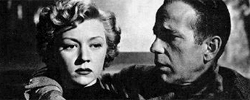
In A Lonely Place
1950 -

They Live By Night
1948 -
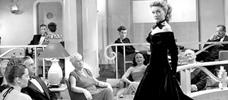
A Woman’s Secret
1949 -
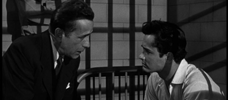
Knock on Any Door
1949 -

Born to Be Bad
1950 -
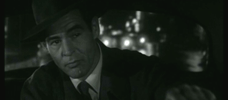
On Dangerous Ground
1952 -
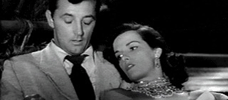
Macao
1952 -
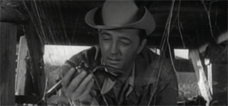
The Lusty Men
1952 -

Johnny Guitar
1954 -
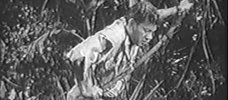
High Green Wall
1954 -
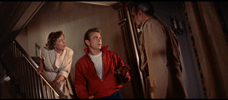
Rebel Without a Cause
1955 -

Bigger Than Life
1956 -

Hot Blood
1956 -

The True Story of Jesse James
1957 -
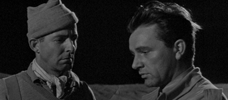
Bitter Victory
1957 -

Party Girl
1958 -

King of Kings
1961 -
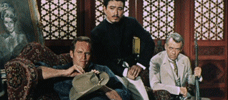
55 Days at Peking
1963 -

The Janitor
1974 -
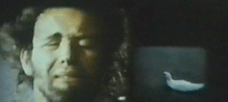
We Can’t Go Home Again
1973-1976 -
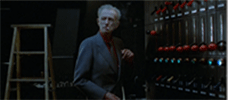
Lightning Over Water
1980
We don’t do comments anymore, but you may contact us here or find us on Twitter or Facebook.



